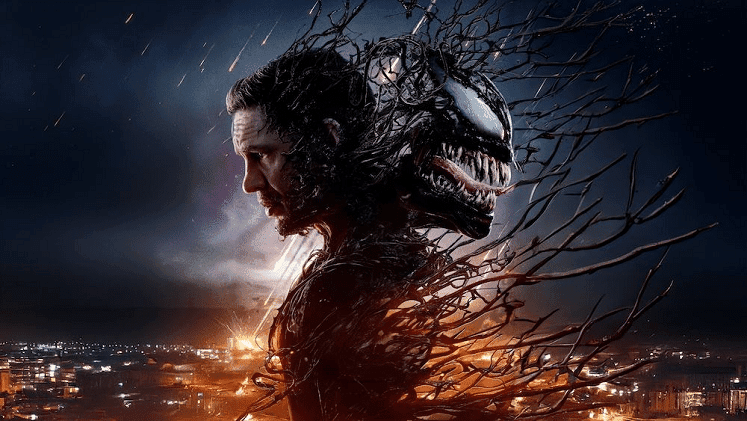The Horror Movie Staples: Iconic Elements That Keep Us on Edge

Introduction:
Horror movies have been captivating audiences for decades, offering spine-chilling thrills, psychological terror, and adrenaline-pumping suspense. From the eerie silence before a jump scare to the relentless pursuit of an unstoppable villain, certain elements have become essential in defining the genre. These horror movie staples continue to evolve yet remain at the heart of what makes the genre so gripping.
In this article, we’ll explore the most iconic elements of horror films, breaking down why they resonate so deeply with audiences and how they’ve stood the test of time.
The Final Girl: A Survivor’s Tale
One of the most recognizable horror movie tropes is “The Final Girl”—the lone survivor who outsmarts the killer and makes it to the end. This character is often resourceful, intelligent, and morally upright, contrasting with other victims who meet their gruesome fates.
Why It Works:
- The audience builds an emotional connection with the protagonist.
- The tension escalates as they fight to survive.
- The victory feels earned after intense challenges.
Some of the most famous Final Girls include Laurie Strode (Halloween), Sidney Prescott (Scream), and Ellen Ripley (Alien). While the trope has evolved to include more complex and diverse representations, its core remains a defining feature of horror cinema.
The Terrifying Villain: Monsters, Killers, and the Supernatural
A horror movie is only as strong as its antagonist. Whether it’s a supernatural entity, a masked slasher, or a psychological manipulator, the villain is often the heart of the horror experience.
Types of Horror Villains:
- Slashers: Michael Myers (Halloween), Jason Voorhees (Friday the 13th).
- Supernatural Entities: Pennywise (It), The Nun (The Conjuring).
- Psychological Threats: Norman Bates (Psycho), Hannibal Lecter (The Silence of the Lambs).
Why It Works:
- Creates fear through unpredictability and brutality.
- Forms the central conflict of the film.
- Leaves a lasting impression, sometimes even becoming pop culture icons.
A great horror villain keeps audiences looking over their shoulders long after the credits roll.
The Creepy Setting: Atmosphere Is Everything
The setting of a horror movie is just as crucial as its characters. A well-crafted atmosphere can build tension before anything even happens.
Classic Horror Locations:
- Abandoned Houses & Mansions: Haunted with dark histories (The Conjuring).
- Creepy Forests: Isolated and full of unseen dangers (The Blair Witch Project).
- Asylums & Hospitals: Places of past suffering (Session 9).
- Small Towns: A seemingly safe place hiding dark secrets (Halloween).
Why It Works:
- Creates an immersive and unsettling experience.
- Enhances the feeling of isolation and vulnerability.
- Contributes to the suspense and unpredictability of the film.
The right setting can turn a simple story into a terrifying experience, making it a crucial horror movie staple.
The Jump Scare: Sudden Terror That Keeps You on Edge
Jump scares are a staple of modern horror, delivering quick, shocking moments that make audiences leap from their seats.
Common Jump Scare Techniques:
- A sudden loud noise or movement.
- Fake-outs, where the scare is anticipated but delayed.
- Subverting expectations by scaring the audience after the expected moment.
Why It Works:
- Creates immediate physical and emotional reactions.
- Keeps viewers engaged and anxious throughout the film.
- Reinforces the tension and unpredictability of the horror experience.
While overuse can make them predictable, well-executed jump scares remain an essential tool in horror filmmaking.
Watch film : Horror movie
The Unsettling Sound Design: Music and Silence Matter
Sound design plays a huge role in horror movies, often being more terrifying than the visuals themselves.
Elements of Effective Horror Sound Design:
- Eerie Background Music: Creates an ominous atmosphere.
- Sudden Silence: Builds anticipation for an upcoming scare.
- Distorted or Unnatural Sounds: Heightens fear and discomfort.
Why It Works:
- Taps into primal fears through sound.
- Manipulates emotions and expectations.
- Enhances the overall horror experience.
A chilling soundtrack, like John Carpenter’s Halloween theme, can become as iconic as the film itself.
The Inevitable Twist: A Shocking Revelation
Many horror films build toward a final twist that changes the audience’s understanding of the story. A great horror twist makes viewers rethink everything they’ve seen.
Famous Horror Twists:
- The Sixth Sense: The protagonist was dead all along.
- Saw: The “dead” body in the room was the killer.
- Psycho: Norman Bates was both mother and son.
Why It Works:
- Adds a layer of complexity to the story.
- Leaves a lasting impact on the audience.
- Encourages rewatching to spot hidden clues.
A well-crafted twist can elevate a horror film from good to legendary.
The Fear of the Unknown: What You Don’t See is Scarier
Sometimes, the most terrifying horror movies show very little, letting the audience’s imagination fill in the gaps.
Examples of “Less is More” Horror:
- Jaws: The shark is rarely seen but always feared.
- Paranormal Activity: Subtle, unexplained movements build dread.
- The Babadook: Psychological terror over visual horror.
Why It Works:
- Engages the audience’s imagination.
- Creates lingering fear that lasts beyond the film.
- Feels more realistic and unsettling.
Horror thrives on mystery, and what we don’t see often scares us the most.
FAQ: Everything You Need to Know About Horror Movie Staples
Q1: Why do horror movies rely on clichés and tropes?
Horror movies use familiar tropes because they work! These elements create suspense, familiarity, and effective storytelling while allowing room for creative twists.
Q2: What makes a great horror villain?
A great horror villain should be memorable, unique, and terrifying. Whether supernatural or human, they must pose a serious and unpredictable threat.
Q3: Are jump scares necessary in horror movies?
Not always. Some horror films rely more on psychological dread than jump scares, but when used correctly, jump scares can enhance tension and fear.
Q4: Why are sound effects so important in horror movies?
Sound builds tension, sets the atmosphere, and triggers primal fear responses. Iconic horror scores can make movies unforgettable.
Q5: How have horror movies evolved over time?
Horror has shifted from supernatural folklore to psychological thrillers, found footage, and socially conscious horror. While themes change, the core staples remain.
Conclusion:
Horror movies continue to captivate audiences because they tap into our deepest fears while offering thrilling entertainment. From the eerie settings to the terrifying villains, these horror movie staples remain timeless, keeping the genre alive and evolving.
Whether you’re a fan of classic horror or modern psychological thrillers, these elements ensure that horror will always have a place in cinema. So next time you watch a horror movie, keep an eye out for these iconic staples—you might just appreciate them even more.




